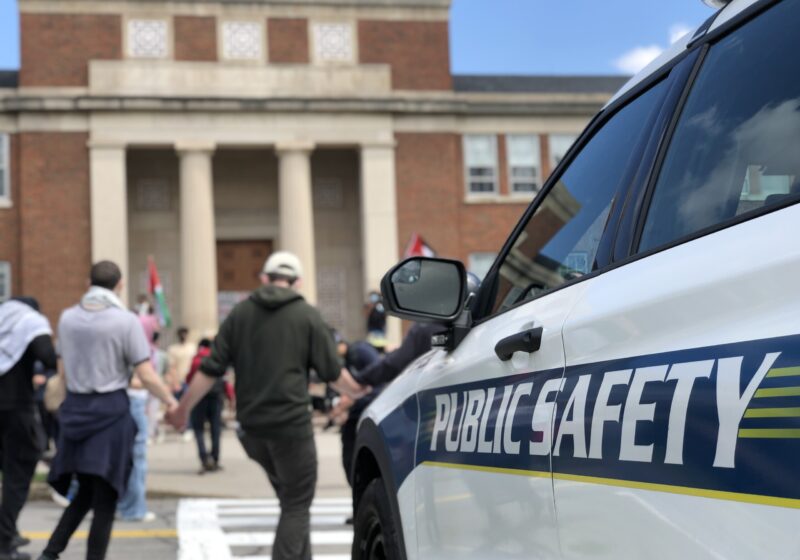There’s history here in Rochester, but sometimes it might be hard for us to see. Maybe it’s easier to keep our eyes down, but even when we look up, it is often difficult to really be conscious of those that have come before us. We read the names on the academic buildings and we probably know a stray fact about those who are memorialized, but still we overlook whole lives.
I was fortunate enough to attend the weekly historical tour of Mount Hope Cemetery, provided by the Friends of Mount Hope Cemetery, last Sunday. My guide was the friendly and knowledgeable Dennis Carr, 50, of Irondequoit. Carr cofounded the Friends of Mount Hope Cemetery, an organization that was created in 1980 to restore parts of the cemetery and to educate the public about the historic site.
Carr believes that it’s valuable for people to know how important Rochester once was. “I think of this place as a big outdoor museum,” he said.
And Carr does well to act as its curator.
We started our tour of the oldest parts of the cemetery from the Northern Gatehouse, which is opposite Robinson Drive.
Mount Hope is America’s first publicly owned and operated Victorian cemetery. In 1836, the city of Rochester acquired the first 54 acres of a cemetery that is now almost four times that size. The cemetery was dedicated to the city two years later.
There were no public parks in the early 19th century and the cemetery was designed not only to accommodate the dead, but also as a place for the living to escape the noise and congestion of city life.
Mount Hope was envisioned to be picturesque and surreal. The sloping hills and the various arboreal specimens, not indigenous to Rochester, reinforce the conceptual intent.
An old Iroquois trail, on which Native Americans would travel, used to run through the site. The Iroquois considered the area to be a place of death, as the cemetery used to be a swamp where swarms of mosquitoes made it easy to contract malaria.
While Carr talked about the history of the cemetery site throughout the tour, he primarily focused on Rochesterian politicians, activists and inventors that are buried within its fences. He gave extended biographies of famous Rochesterians – Henry A. Strong, Hiram Sibley and Frederick Douglass.
Carr also entertained the tour group with his curious anecdotes about Susan B. Anthony’s arrest and the less than honest practices of past Rochester businessmen.
The tomb of John Bausch and Henry Lomb found particular significance for me. Bausch, an optician, and Lomb, a businessman, formed one of Rochester’s most successful companies through the invention and distribution of hard rubber framed glasses. Draped under a variegated willow tree, their friendship is forever commemorated by a tomb that reads Bausch-Lomb on one side, and Lomb -Bausch on the other. It made me wonder about the histories of the other engraved names of deceased persons on campus buildings.
The university can create quite a shell. Dorms, dining halls and classes are all quite close together – it’s all quite engrossing. But take the time to explore the land beyond the spiked iron fence and you might begin to realize how much has come before.
Tours of Mount Hope Cemetery are free every Sunday starting at 2 and 3 p.m. and also on selected Saturdays through the end of October.
Rudolph can be reached at drudolph@campustimes.org.

